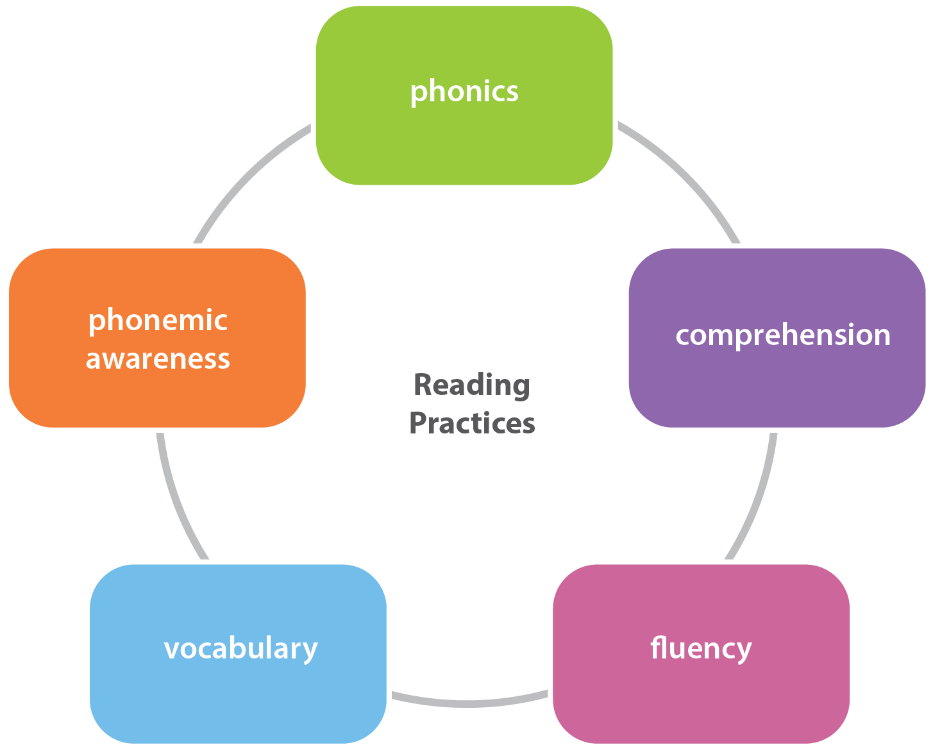Building Strong Readers: Understanding the 5 Essential Elements of Reading
28th March 2025

Reading is more than just recognizing words on a page—it’s a complex, layered process that enables learners to comprehend, analyze, and interact with text meaningfully. For educators, especially those undergoing pre and primary teacher training certification courses, understanding the five essential components of reading is critical. These components form the foundation of effective reading instruction and help children become confident, skilled readers. Explore the five components of reading and how each plays a crucial role in early literacy development. If you have enrolled in a pre-primary teacher training course, this guide will enhance your knowledge and practical approach to teaching reading skills in the classroom.
The 5 Key Components of Reading Every Teacher Should Know
Here are the 5 key components of reading teachers must know to master reading instruction and build a literary foundation for their students:

1. Phonemic Awareness
Phonemic awareness is the ability to hear, identify, and manipulate individual sounds—or phonemes—in spoken words. It is purely auditory and does not involve print.
Children with strong phonemic awareness can:
- Recognize rhyming words
- Identify beginning and ending sounds
- Segment and blend sounds to form words
This component is a key predictor of reading success, especially in the early years. Educators in pre and primary-teacher training certification courses often learn techniques like clapping out syllables, sound-matching games, and oral blending activities to strengthen this skill. Without phonemic awareness, students may struggle to decode words, making further reading instruction difficult.
2. Phonics
Phonics involves the relationship between sounds and their corresponding letters or letter patterns. While phonemic awareness is about sounds, phonics brings in the visual aspect of reading—how letters and sounds work together.
A structured phonics approach helps children:
- Connect spoken sounds to written symbols
- Understand spelling patterns
- Decode unfamiliar words when reading independently
In a pre primary teacher training course, educators are taught systematic phonics instruction strategies, such as using flashcards, phonics readers, and multi-sensory learning. This is essential for early learners as they start to associate spoken language with written text.
3. Vocabulary
Vocabulary development is essential for understanding what is read. It refers to the knowledge of word meanings and the ability to use and recognize a wide variety of words.
Children build vocabulary through:
- Listening to read-aloud
- Engaging in conversations
- Learning new words during lessons
Teachers pursuing a primary teacher training course are encouraged to incorporate rich vocabulary instruction in every subject area, not just reading. Strategies include word walls, context-based learning, and thematic word games. A robust vocabulary allows students to make sense of what they read and express themselves clearly.
4. Fluency
Fluency is the ability to read a text accurately, quickly, and with proper expression. It serves as a bridge between word recognition and comprehension.
Fluent readers:
- Read aloud smoothly without frequent pauses
- Use intonation and expression to convey meaning
- Can focus on understanding the text rather than decoding each word
Fluency develops through repeated reading, modeling, and guided oral reading. Educators who undergo pre and primary-teacher training certification courses learn how to assess fluency and implement strategies like paired reading, choral reading, and timed reading sessions.
5. Comprehension
Comprehension is the ultimate goal of reading—understanding and interpreting the text. It involves both literal understanding and critical thinking.
To enhance comprehension, teachers can:
- Ask open-ended questions
- Encourage predictions and summarization
- Teach visualization and inference-making skills
Participants in a primary teacher training course are trained to use interactive read-aloud, graphic organizers, and cross-curricular connections to deepen comprehension. Comprehension instruction helps students connect texts to their own experiences and the wider world.
Integrating the 5 Components in the Classroom
Effective reading instruction doesn't isolate these components; rather, it integrates them seamlessly. For instance, a phonics lesson can include vocabulary words, and a fluency activity can also target comprehension. In pre and primary-teacher training certification courses, educators learn how to design literacy-rich environments where these five components are naturally embedded into daily instruction.
A sample lesson might look like this:
- Begin with a phonemic awareness warm-up
- Introduce a new sound-letter correspondence (phonics)
- Read a short story containing new vocabulary
- Conduct a paired reading session (fluency)
- Finish with comprehension questions and discussion
This holistic approach ensures that all aspects of reading are reinforced and that learners make steady, confident progress.
Bottom Line
Understanding the five components of reading equips educators to identify and address reading difficulties early on. It also allows for differentiated instruction, where activities are tailored to individual student needs. Whether you are just beginning your teaching journey with pre and primary-teacher training certification courses or are an experienced educator, mastering these core components will empower you to lay a strong foundation for lifelong literacy.
We believe education should be accessible to everyone. That’s why we don’t charge for our blogs. Find the right course that will help you in your career with us, contact us at - 1800–212–6400. You can mail us at act@asiancollegeofteachers.com
Written By: Rimpa Ghosh
